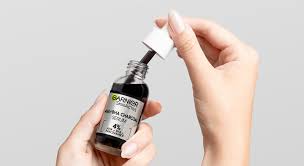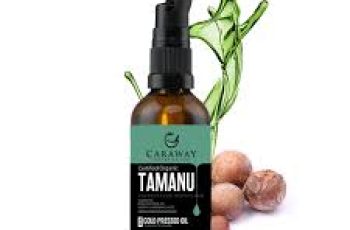
Can You Use BHA With Niacinamide?
When using skincare ingredients as potent as BHA, you will often find there is an array of dos and don’ts when it comes to combining it with other powerhouse ingredients. This is exactly what we will be exploring today and trying to figure out whether you can use BHA with niacinamide, so after a quick recap about how each of these ingredients benefit the skin, we will be diving straight in to finding out more.
What is Niacinamide?
Niacinamide, is a form of vitamin B3 and is found in many foods, such as fish, milk, green vegetables, and eggs. You’ll find that for skincare formulations it’s derived from grains, such as yeast, and other cereals once its blended it’s able to deliver impressive results, even for those with a sensitive and reactive skin type. The main benefits of using niacinamide is as follows.
Repairs and strengthens lipid barrier. Niacinamide can do this by helping the skin grow ceramides which strength the skin’s natural protective barrier ensuring it is able to retain moisture. Once the skin barrier contains the correct amount of water it can ward off any free radical damage. This minimises the amount of oxidised stress left on the skin which can occur from exposure to UV rays, pollution, and
Regulates oil production. Niacinamide not only helps those with a dry skin type, but it is also able to regulate oil production in the sebaceous glands. This helps keep the skin balanced and prevents sebum being overproduced.
Treats hyperpigmentation and even skin tone. Surprisingly for some, niacinamide can help with improving the overall look of your skin tone and reducing any signs of hyperpigmentation. With active levels of niacinamide of over 5% many users found an improvement after 4 weeks; this result is thought to occur due to boost in collagen production.
Reduces appearance of fine lines and wrinkles. With niacinamide providing constant moisture to the skin, fine lines of dehydration are reduced completely. You will also find that niacinamide can boost the production of collagen by 54% giving the complexion a plumped and youthful finish, with wrinkles significantly improved.
There you have some examples of the benefits you can expect to see when using niacinamide, don’t forget you can find out more about the ingredient over on the Beauty Insiders blog post.
What is BHA?
Beta hydroxy acid, BHA are a family of acids derived from a variety of ingredients, such as fruit sugars and willow bark. Although there are a few different acids in the collection of BHA, salicylic acid is the most used in skincare formulas. Compared to their cousins, alpha hydroxy acids, AHAs, BHAs are often oil-soluble and have a smaller molecular size meaning they can penetrate further int the skin and work deeply in the pores.
BHAs also provide chemical exfoliation meaning they can slough away the layer of dead skin cells that sit on the surface of the skin. By ridding the face of these barrier, you prevent any development of breakouts, such as blackheads and whiteheads, whilst restoring the complexion and leaving it with a luminous glow.
Now you have had a quick skin ingredient lesson, we can move on to finding out more about teaming these powerhouse ingredients together and the benefits you can expect to see.
Can you use AHA BHA and niacinamide?
Yes, you can, but not all at the same time. This is because the pH levels in the skin will be altered making it more suspectable to irritation, redness, and will have a negative impact on how effective the other ingredients perform on the skin.
Having said that, you can still use all three ingredients, it is just a case of finding the best routine for you and your skin. For example, one routine is to use a cleanser containing an AHA, such as glycolic acid during your morning routine, followed with a salicylic acid enriched toner in the evening. Niacinamide can be used twice a day after each acid, just ensure you’ve left enough time in between applications, 10 minutes or so should do the trick.
What can you not mix with niacinamide?
As a skincare ingredient, niacinamide is known for being versatile and easy to use with other ingredients. You may have found there are several outdated articles explaining how niacinamide should be avoided with vitamin C. Some feel that because the ingredients work in similar ways on the skin, they end up counteracting each other preventing them from working effectively. This is not the case, yes, vitamin C and niacinamide provide similar benefits for the skin, but this doesn’t lead to the negative impacts some fear. What I would suggest when teaming these potent actives together, is to firstly consult with a doctor or dermatologist. Next you can perform a patch test for 24 hours before applying the products to the face, this will avoid unwanted irritation. Finally, always allow at least 10 minutes between applications to help the skin’s pH levels to rebalance and prepare for the next product.
Can I use BHA and AHA together?
Yes, but only if you apply them correctly. There are several effective formulations that contain both acids that deliver impressive results. Opting to use this and whether it is the best product to apply is down to your skin type.
What I mean by this is to avoid mixing both BHA and AHAs together if you have a dry skin type or are prone to sensitivity. This will be too harsh for the skin resulting in a variety of side effects, such as redness and irritation. To reap the rewards of both AHA and BHA you can alternate when you use them in your routine. Each ingredient is formulated into different products making it easier to use each ingredient throughout your routine, whilst preventing the skin from becoming over exfoliated and stripped of the vital oil and water it needs to remain healthy.
Is salicylic acid a BHA?
Yep, in fact, it is the most recognised and used BHA in skincare products. Available in various percentage strengths in over-the-counter formulas, prescribed, and professional treatments. A favourite amongst dermatologists for targeting blemishes, many who are prone to acne and frequent breakouts find salicylic acid to be a skin saviour. Just be aware that due to the potency of the acid can be too much for those with a dry and sensitive skin type. With salicylic acid working further into the skin than other acids if used incorrectly or on the wrong skin type, there could be several negative side effects occurring.
There you have a little more insight to how to use BHA with niacinamide, don’t forget if you have any further questions about using these ingredients, you can come and find one of our experts on Instagram.


